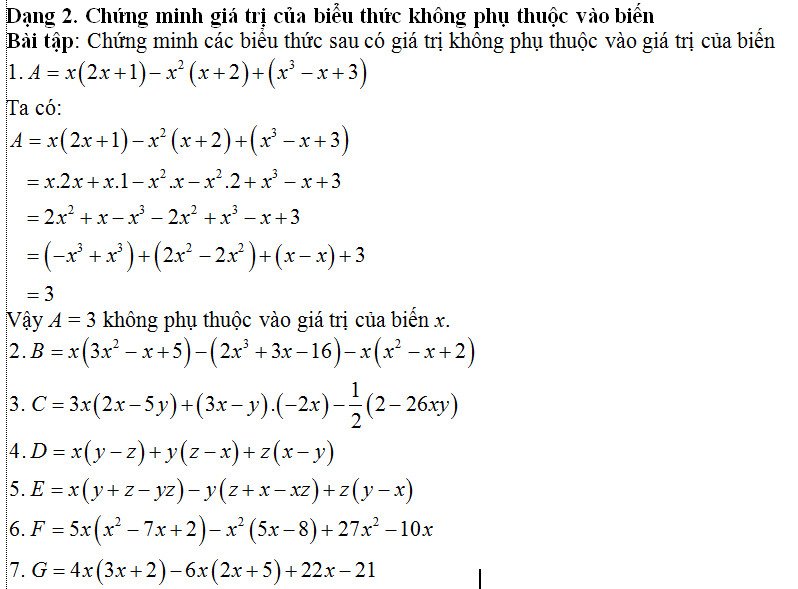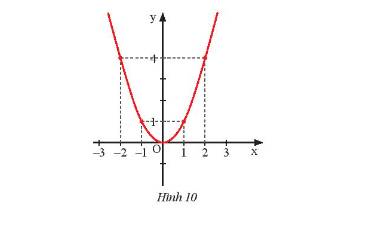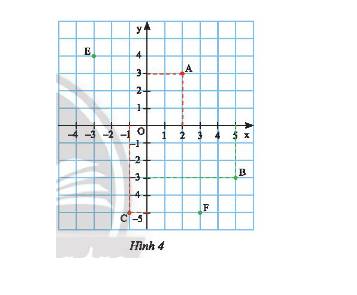
Hãy nhập câu hỏi của bạn vào đây, nếu là tài khoản VIP, bạn sẽ được ưu tiên trả lời.


\(x+y+z=0\rArr\left(x+y+z\right)^2=0\)
\(\Rightarrow x^2+y^2+z^2+2xy+2yz+2zx=0\)
\(\rArr x^2+y^2+z^2+2\left(xy+yz+xz\right)=0\)
\(\rArr x^2+y^2+z^2=0\) (do \(xy+yz+xz=0\) )
\(\rArr x=y=z=0\)
Do đó:
\(\left(x-1\right)^{2023}+y^{2024}+\left(z+1\right)^{2025}=\left(0-1\right)^{2023}+0^{2024}+\left(0+1\right)^{2025}=-1+0+1=0\)


a: Xét tứ giác DIHK có
góc DIH=góc DKH=góc KDI=90 độ
nên DIHK là hình chữ nhật
b: Xét tứ giác IHAK có
IH//AK
IH=AK
Do đó: IHAK là hình bình hành
=>B là trung điểm chung của IA và HK
Xét ΔIKA có IC/IK=IB/IA
nên BC//KA
Xét ΔIDA có IB/IA=IM/ID
nên BM//DA
=>B,C,M thẳng hàng

theo đề ta có: \(x+y+z=0\Rightarrow\left(x+y+z\right)^2=0\)
\(\Rightarrow x^2+y^2+z^2+2\cdot\left(xy+yz+zx\right)=0\)
\(\Rightarrow x^2+y^2+z^2=-2\left(xy+yz+xz\right)\left(1\right)\)
ta co: \(x^3+y^3+z^3-3xyz=\left(x+y+z\right)\left(x^2+y^2+z^2-xy-yz-xz\right)\)
mà x + y + z = 0
\(\Rightarrow x^3+y^3+z^3-3xyz=0\Rightarrow x^3+y^3+z^3=3xyz\left(2\right)\)
a. VT = \(\left(x^2+y^2+z^2\right)^2=x^4+y^4+z^4+2\cdot\left(x^2y^2+y^2z^2+x^2z^2\right)\)
ta có: \(\left(xy+yz+zx\right)^2=\left(x^2y^2+y^2z^2+x^2z^2\right)+2xyz\cdot\left(x+y+z\right)\)
vì x+y+z=0 nên: \(\left(xy+yz+zx\right)^2=\left(x^2y^2+y^2z^2+x^2z^2\right)\)
từ (1) ta có: \(\left(x^2+y^2+z^2\right)^2=\left\lbrack-2\left(xy+yz+zx\right)^{}\right\rbrack^2\) (*)
\(=4\cdot\left(xy+yz+zx\right)^2=4\cdot\left(x^2y^2+y^2z^2+z^2x^2\right)\)
ta có: \(4\cdot\left(x^2y^2+y^2z^2+z^2x^2\right)=x^4+y^4+z^4+2\cdot\left(x^2y^2+y^2z^2+z^2x^2\right)\)
mà: \(2\cdot\left(x^2y^2+y^2z^2+z^2x^2\right)=x^4+y^4+z^4\)
thay vào (*) ta được:
\(\left(x^2+y^2+z^2\right)^2=\left(x^4+y^4+z^4\right)+2\cdot\left(x^2y^2+y^2z^2+z^2x^2\right)\)
\(=x^4+y^4+z^4+x^4+y^4+z^4=2\cdot\left(x^4+y^4+z^4\right)=VP\)
⇒ đpcm
b. \(VT=5\cdot\left(x^3+y^3+z^3\right)\left(x^2+y^2+z^2\right)\)
\(=5\cdot\left(3xyz\right)\left(x^2+y^2+z^2\right)\)
\(=15xyz\cdot\left(x^2+y^2+z^2\right)\) (3)
\(x+y+z=0\Rightarrow x+y=-z\)
\(x^5+y^5+z^5=x^5+y^5+\left\lbrack-\left(x+y\right)\right\rbrack^5=x^5+y^5-\left(x+y\right)^5\)
\(=x^5+y^5-\left(x^5+5y^4+10x^3y^2+10x^2y^3+5xy^4+y^5\right)\)
\(=-5x^4y-10x^3y^2-10x^2y^3-5xy^4\)
\(=-5xy\left(x^3+2x^2y+2xy^2+y^3\right)\)
\(=-5xy\left\lbrack x^3+y^3+2xy\left(x+y\right)\right\rbrack\)
\(=-5xy\left\lbrack\left(x+y\right)^3-3xy\left(x+Y\right)+2xy\left(x+y\right)\right\rbrack\)
\(=-5xy\left\lbrack\left(x+Y\right)^3-xy\left(x+y\right)\right\rbrack\)
\(=-5xy\left(x+Y\right)\left\lbrack\left(x+y\right)^2-xy\right\rbrack\)
vì x+y=-z nên ta có:
\(x^5+y^5+z^5=-5xy\left(-z\right)\left\lbrack\left(-z\right)^2-xy\right\rbrack=5xyz\left(x^2-zy\right)\)
mặt khác \(x+y=-z\Rightarrow\left(x+y\right)^2=z^2\Rightarrow x^2+y^2+2xy=z^2\)
\(x^2+y^2+z^2=x^2+y^2+\left(x+y\right)^2\)
\(=x^2+y^2+x^2+2xy+y^2=2\cdot\left(x^2+xy+y^2\right)\)
\(z^2-xy=\left(x+y\right)^2-xy=x^2+2xy+y^2-xy=x^2+xy+y^2\)
vậy \(x^5+y^5+z^5=5xyz\cdot\left(x^2+xy+y^2\right)=\frac52xyz\left(x^2+y^2+z^2\right)\)
\(\Rightarrow2\cdot\left(x^5+y^5+z^5\right)=5xyz\left(x^2+y^2+z^2\right)\)
⇒ \(6\cdot\left(x^5+y^5+z^5\right)=15xyz\left(x^2+y^2+z^2\right)\) (4)
từ (3) và (4) ⇒ VT = VP


Điểm \(O\) là gốc tọa độ nên \(O\left( {0;0} \right)\)
Từ điểm \(E\) ta vẽ vuông góc với \(Ox;Oy\) cắt \(Ox\) tại – 3 và cắt \(Oy\) tại 4 nên \(E\left( { - 3;4} \right)\).
Từ điểm \(F\) ta vẽ vuông góc với \(Ox;Oy\) cắt \(Ox\) tại 3 và cắt \(Oy\) tại – 5 nên \(E\left( {3; - 5} \right)\).

Bài 2:
a: ĐKXĐ: x∉{2;-2}
b: \(A=\frac{3x}{x-2}-\frac{2}{x+2}+\frac{2x-4}{x^2-4}\)
\(=\frac{3x}{x-2}-\frac{2}{x+2}+\frac{2\left(x-2\right)}{\left(x-2\right)\left(x+2\right)}\)
\(=\frac{3x}{x-2}-\frac{2}{x+2}+\frac{2}{x+2}=\frac{3x}{x-2}\)
c: Thay x=-5 vào A, ta được:
\(A=\frac{3\cdot\left(-5\right)}{-5-2}=\frac{-15}{-7}=\frac{15}{7}\)
d: Để A nguyên thì 3x⋮x-2
=>3x-6+6⋮x-2
=>6⋮x-2
=>x-2∈{1;-1;2;-2;3;-3;6-6}
=>x∈{1;2;4;0;5;-1;8;-4}
Kết hợp ĐKXĐ, ta được: x∈{1;4;0;5;-1;8;-4}
Bài 1:
a: \(A=x^2+10x+25\)
\(=x^2+2\cdot x\cdot5+5^2=\left(x+5\right)^2\)
b: \(B=x^2-y^2+8x-8y\)
=(x-y)(x+y)+8(x-y)
=(x-y)(x+y+8)
c: \(C=x^2+4x-5\)
\(=x^2+5x-x-5\)
=x(x+5)-(x+5)
=(x+5)(x-1)

theo đề ta có: \(x+y+z=0\Rightarrow\left(x+y+z\right)^2=0\)
\(\Rightarrow x^2+y^2+z^2+2\cdot\left(xy+yz+zx\right)=0\)
\(\Rightarrow x^2+y^2+z^2=-2\left(xy+yz+xz\right)\left(1\right)\)
ta co: \(x^3+y^3+z^3-3xyz=\left(x+y+z\right)\left(x^2+y^2+z^2-xy-yz-xz\right)\)
mà x + y + z = 0
\(\Rightarrow x^3+y^3+z^3-3xyz=0\Rightarrow x^3+y^3+z^3=3xyz\left(2\right)\)
a. VT = \(\left(x^2+y^2+z^2\right)^2=x^4+y^4+z^4+2\cdot\left(x^2y^2+y^2z^2+x^2z^2\right)\)
ta có: \(\left(xy+yz+zx\right)^2=\left(x^2y^2+y^2z^2+x^2z^2\right)+2xyz\cdot\left(x+y+z\right)\)
vì x+y+z=0 nên: \(\left(xy+yz+zx\right)^2=\left(x^2y^2+y^2z^2+x^2z^2\right)\)
từ (1) ta có: \(\left(x^2+y^2+z^2\right)^2=\left\lbrack-2\left(xy+yz+zx\right)^{}\right\rbrack^2\) (*)
\(=4\cdot\left(xy+yz+zx\right)^2=4\cdot\left(x^2y^2+y^2z^2+z^2x^2\right)\)
ta có: \(4\cdot\left(x^2y^2+y^2z^2+z^2x^2\right)=x^4+y^4+z^4+2\cdot\left(x^2y^2+y^2z^2+z^2x^2\right)\)
mà: \(2\cdot\left(x^2y^2+y^2z^2+z^2x^2\right)=x^4+y^4+z^4\)
thay vào (*) ta được:
\(\left(x^2+y^2+z^2\right)^2=\left(x^4+y^4+z^4\right)+2\cdot\left(x^2y^2+y^2z^2+z^2x^2\right)\)
\(=x^4+y^4+z^4+x^4+y^4+z^4=2\cdot\left(x^4+y^4+z^4\right)=VP\)
⇒ đpcm
b. \(VT=5\cdot\left(x^3+y^3+z^3\right)\left(x^2+y^2+z^2\right)\)
\(=5\cdot\left(3xyz\right)\left(x^2+y^2+z^2\right)\)
\(=15xyz\cdot\left(x^2+y^2+z^2\right)\) (3)
\(x+y+z=0\Rightarrow x+y=-z\)
\(x^5+y^5+z^5=x^5+y^5+\left\lbrack-\left(x+y\right)\right\rbrack^5=x^5+y^5-\left(x+y\right)^5\)
\(=x^5+y^5-\left(x^5+5y^4+10x^3y^2+10x^2y^3+5xy^4+y^5\right)\)
\(=-5x^4y-10x^3y^2-10x^2y^3-5xy^4\)
\(=-5xy\left(x^3+2x^2y+2xy^2+y^3\right)\)
\(=-5xy\left\lbrack x^3+y^3+2xy\left(x+y\right)\right\rbrack\)
\(=-5xy\left\lbrack\left(x+y\right)^3-3xy\left(x+Y\right)+2xy\left(x+y\right)\right\rbrack\)
\(=-5xy\left\lbrack\left(x+Y\right)^3-xy\left(x+y\right)\right\rbrack\)
\(=-5xy\left(x+Y\right)\left\lbrack\left(x+y\right)^2-xy\right\rbrack\)
vì x+y=-z nên ta có:
\(x^5+y^5+z^5=-5xy\left(-z\right)\left\lbrack\left(-z\right)^2-xy\right\rbrack=5xyz\left(x^2-zy\right)\)
mặt khác \(x+y=-z\Rightarrow\left(x+y\right)^2=z^2\Rightarrow x^2+y^2+2xy=z^2\)
\(x^2+y^2+z^2=x^2+y^2+\left(x+y\right)^2\)
\(=x^2+y^2+x^2+2xy+y^2=2\cdot\left(x^2+xy+y^2\right)\)
\(z^2-xy=\left(x+y\right)^2-xy=x^2+2xy+y^2-xy=x^2+xy+y^2\)
vậy \(x^5+y^5+z^5=5xyz\cdot\left(x^2+xy+y^2\right)=\frac52xyz\left(x^2+y^2+z^2\right)\)
\(\Rightarrow2\cdot\left(x^5+y^5+z^5\right)=5xyz\left(x^2+y^2+z^2\right)\)
⇒ \(6\cdot\left(x^5+y^5+z^5\right)=15xyz\left(x^2+y^2+z^2\right)\) (4)
từ (3) và (4) ⇒ VT = VP















c: Xét ΔANB có
EM//NB
E là trung điểm của AB
=>M là trung điểm của AN
=>AM=MN
Xét ΔDMC có
F là trung điểm của CD
FN//DM
=>N là trung điểm của CM
=>CN=NM=AM
AM+MO=AO
CN+NO=CO
mà AO=CO và AM=Cn
nên MO=NO
=>O là trung điểm của MN
=>M đối xứng N qua O